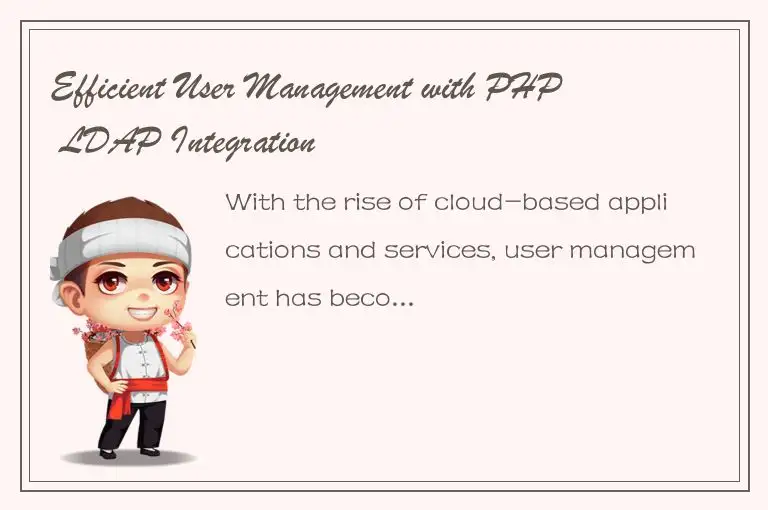With the rise of cloud-based applications and services, user management has become increasingly important. Organizations need efficient ways to manage their users across multiple platforms, devices, and services. One solution that has gained popularity is LDAP, or Lightweight Directory Access Protocol. In this article, we’ll explore the benefits of using PHP LDAP integration for efficient user management.

What is LDAP?
LDAP is a protocol used for accessing and maintaining distributed directory information services over an Internet Protocol (IP) network. In simpler terms, it’s a system for storing and managing information about users, groups, and resources. LDAP directories are used by organizations to centralize user information and make it easier to manage access to shared resources.
LDAP is used by many applications and services, including email clients, web servers, and even operating systems. By integrating with LDAP, applications can authenticate users and authorize access to resources, such as databases, files, or printers.
What is PHP LDAP?
PHP LDAP is a module for the PHP programming language that provides efficient and flexible access to LDAP directories. PHP is a popular server-side scripting language used to create dynamic web pages and applications.
By integrating PHP with LDAP, developers can implement secure and efficient user authentication and authorization within their web applications. PHP LDAP provides a rich set of functions for connecting to LDAP servers, searching for and retrieving directory information, and managing directory entries.
Benefits of PHP LDAP Integration
There are many benefits of using PHP LDAP integration for efficient user management. Here are some of the key advantages:
1. Centralized User Management
By integrating with LDAP, web applications can centralize user management. User information can be stored in a single LDAP directory, which can be accessed by multiple applications and services. This makes it easier to manage users across multiple platforms and devices. For example, a user can have the same login credentials for their email client, web application, and network login.
2. Improved Security
LDAP provides a secure system for authenticating users and managing access to resources. By integrating with LDAP, web applications can implement secure authentication protocols, such as SSL/TLS or Kerberos. This helps prevent unauthorized access and ensures that user passwords are encrypted and secure.
3. Efficient User Search
PHP LDAP provides powerful search capabilities for retrieving user information from the LDAP directory. Developers can search for users based on attributes such as name, email, or group membership. This makes it easy to retrieve user information and implement custom user interfaces within web applications.
4. Flexible User Authentication
LDAP provides a flexible system for authenticating users. By integrating with LDAP, web applications can support multiple authentication protocols, such as username/password or public key authentication. This makes it easy to support different types of users, such as employees, customers, or partners.
5. Scalability
LDAP is designed to be scalable and can handle large numbers of users and directory entries. By integrating with LDAP, web applications can support growing numbers of users and resources without sacrificing performance.
How to Implement PHP LDAP Integration
Implementing PHP LDAP integration can be done in a few simple steps:
1. Install the PHP LDAP Module
The PHP LDAP module needs to be installed on the web server. This can be done using the server’s package manager or by compiling PHP with LDAP support.
2. Configure the LDAP Server Connection
The web application needs to connect to the LDAP server using the appropriate connection details, such as the server name, port, and protocol. This can be done using the php_ldap_connect() function.
3. Bind to the LDAP Server
After connecting to the LDAP server, the web application needs to bind to the directory using the appropriate credentials. This can be done using the php_ldap_bind() function.
4. Search the LDAP Directory
Once connected and bound, the web application can search the LDAP directory for user information using the php_ldap_search() function.
5. Retrieve and Display User Information
After searching the LDAP directory, the web application can retrieve and display user information using the php_ldap_get_entries() function.
Conclusion
PHP LDAP integration provides an efficient and flexible way to manage users within web applications. By integrating with LDAP, developers can centralize user management, improve security, and implement powerful search and authentication capabilities. With the right setup and configuration, PHP LDAP integration can help organizations efficiently manage their users across multiple platforms and services.




 QQ客服专员
QQ客服专员 电话客服专员
电话客服专员